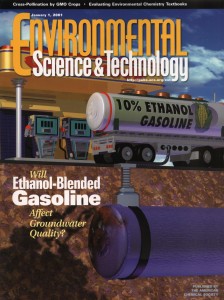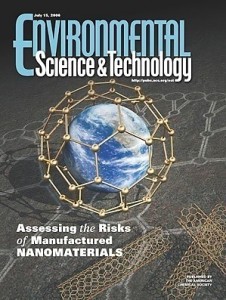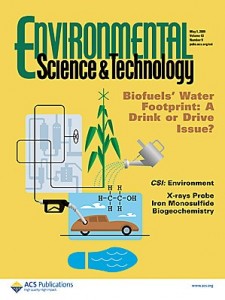Alvarez Lab
General Background
The Alvarez Lab integrates expertise in environmental biotechnology, microbiology and nanotechnology to conduct multidisciplinary and globally-relevant research on water treatment and reuse (e.g., advanced photo-oxidation processes and nanomaterial-enabled microbial control), bioremediation of contaminated aquifers, fate and transport of toxic chemicals, antibiotic resistance propagation and control, water footprint of biofuels, microbial-plant interactions, and environmental implications of nanotechnology. Whereas our research topics and methods are quite diverse (involving molecular biology, microbial ecology, contaminant hydrogeology, materials science, biogeochemistry, photochemistry, and water resources management), there are two unifying trends. First is a commitment to enhance water resources sustainability through policy-relevant research. Second is a tendency to work on the leading edge of discovery rather than on the side of refinement. We also collaborate with numerous colleagues in Latin America, China and Europe, to offer students opportunities for international integrative experiences beyond the technical core. Current funding sources include NSF, SERDP, API, and several private industries and foundations. Applications from interested exceptional students are welcome.
Examples of Past Research Contributions
The Alvarez lab has made various significant contributions to the practice and pedagogy of groundwater bioremediation. Past award-wining research contributions include (a) the discovery that substrate interactions between target pollutants can significantly affect the rate and extent of biodegradation, including the development of mathematical models that describe interactions such as metabolic flux dilution and catabolite repression to assess the natural attenuation of contaminant mixtures; (b) the groundwater quality implications of the presence of biofuels in gasoline spills, such as the preferential degradation of ethanol plus the accelerated depletion of electron acceptors and the transient accumulation of acetate (a common anaerobic metabolite) that thermodynamically inhibits hydrocarbon biodegradation and natural attenuation, resulting in longer hydrocarbon plumes and a greater risk of exposure; (c) the exploitation of biogeochemical niches in permeable reactive zero-valent iron (ZVI) barriers (e.g., coupling generation of cathodic hydrogen during iron corrosion with anaerobic reductive biotransformations) to enhance the treatment of oxidized pollutants; (d) the discovery that some sewage treatment plants can serve as breeding grounds and point sources of multidrug-resistant bacteria; and (e) the development of biomarkers to quantify aerobic biodegradation of 1,4-dioxane in support of bioremediation forensics and natural attenuation performance assessment.
The Alvarez lab has also conducted pioneering research on the potential environmental impacts of nanotechnology. The widespread production of engineered nanomaterials and their rapid incorporation into a variety of consumer products and applications is outpacing the development of appropriate regulations to mitigate potential risks associated with their release to the environment. Past contributions include (a) discerning how nanomaterials interact with bacteria (which are the basis of all known ecosystems) and influence microbial ecosystem services (e.g., nutrient cycling, waste biodegradation, primary productivity), and elucidating their mode of action; (b) developing novel and greener (solar-based) nano-enabled disinfection approaches that purify water without the need for electricity and without creating harmful disinfection byproducts; (c) discovering that some fullerene nanoparticles can cause teratogenic effects in fish that can be mitigated by administering anti-oxidants; (d) discerning that natural organic matter can coat nanoparticles and decrease their bioavailability and toxicity; (e) discerning unintended consequences such as biofilm promotion by sublethal concentrations of bactericidal silver nanoparticles; and (e) illustrating the potential for nanoparticle bioaccumulation and transport through food webs. Collectively, these contributions represent a timely and proactive effort towards the development of appropriate guidelines and conceptual models to steward the sustainable design, use and disposal of engineered nanomaterials.
More recently, the Alvarez lab has focused on nanotechnology water treatment (NEWT), such as enhancing the efficiency and selectivity of photocatalysis for viral and bacterial disinfection and detoxification of pharmaceuticals under solar irradiation (thus obviating the need for electricity), and development of water filtration membranes that incorporate antimicrobial nanoparticles exhibit superior biofouling resistance. Research in this area seeks to contribute to the development of modular, multifunctional and high-efficiency processes enabled by nanotechnology, which have great potential to both retrofit ageing water infrastructure and develop high performance, low maintenance decentralized treatment and reuse systems including point-of-use devices.
Overall, the Alvarez lab has made lasting fundamental, practical and pedagogical contributions to water pollution control by advancing environmental biotechnology and nanotechnology, and has been proactive in raising awareness and promoting mitigation of threats to water resources associated with increased occurrence of various contaminants of emerging concern.
Current Lab Members and Research Projects
| CEVE Staff | NEWT & RWI Staff |
| Liz Hutchison x6161 | Liz Scroggins x6398 |
| Caroline Leggett x4656 | Jorge Loyo x8116 |
| Olga Trejo x2353 | Eric Willman x3866 |
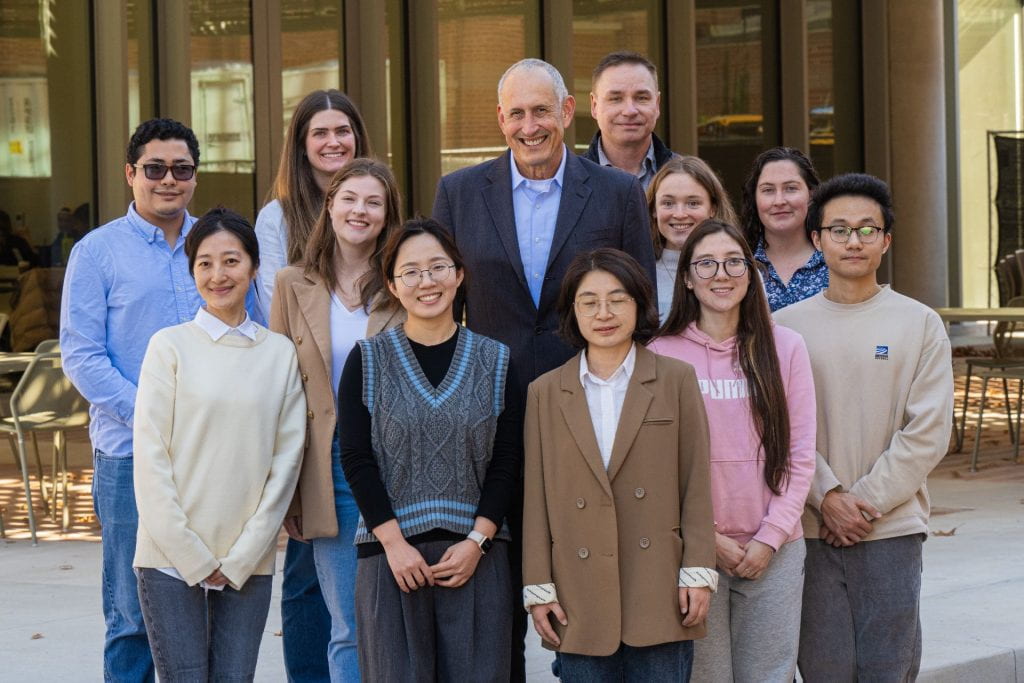
Alvarez Lab 2024

Alvarez Lab 2022
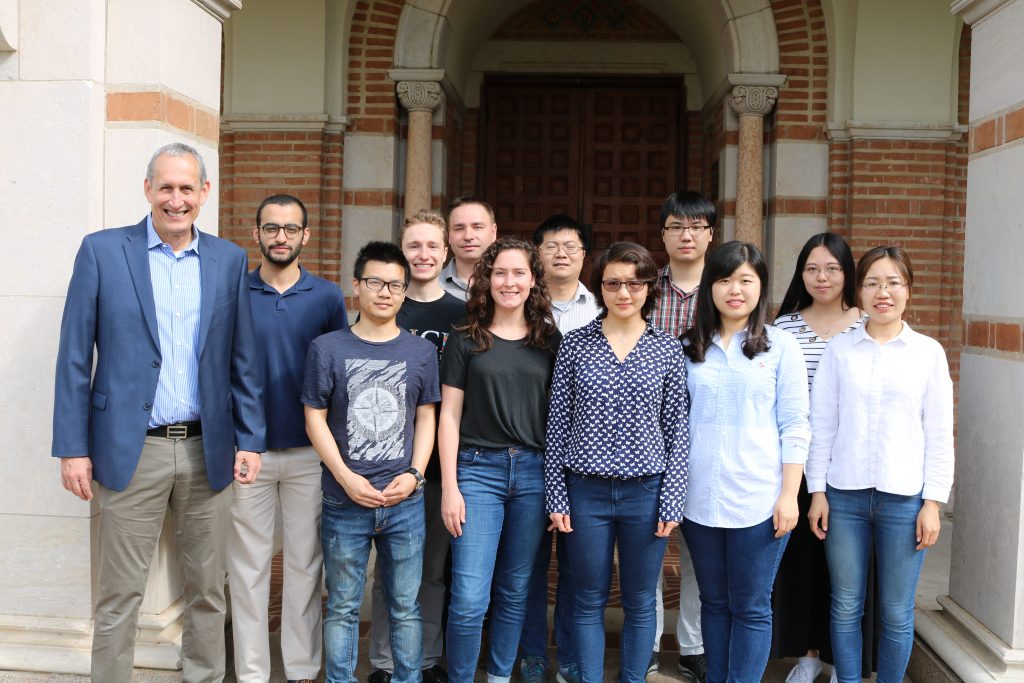
Alvarez Lab May 2018
Postdoctoral Research Fellows
 Xiao Chen
Xiao Chen
Email
Postdoctoral Scholar
Earth, Environmental and Planetary Sciences
PhD, 2020, Environmental Engineering, Nanyang Technological University
Conducting research on examining the potential for land application of a value-added carbon product (C0) made from the natural gas pyrolysis. We proposed a model for C0 risk assessments upon its environmental exposure to the natural water, drinking water and soil systems in terms of dissolved organic carbon and polycyclic aromatic hydrocarbon released from C0, long-term behaviour of C0 after decades of field aging, and toxicity towards soil microbes.
Research Scientists
 Jacques Mathieu
Jacques Mathieu
Email
Research Scientist
Civil and Environmental Engineering
Ph.D., 2011, Environmental Engineering, Rice University
Visiting Scholars
 Jenny Laverde Gomez
Jenny Laverde Gomez
Email
Visiting Scholar
Sentinel Environmental
Ph.D, 2011, University of Braunschweig, Germany. 2006, Post-graduate degree in Process Engineering and Quality Management. 2004 , Professional degree in Industrial Microbiologist.
 Megan Miller
Megan Miller
Email
Research Specialist
Civil and Environmental Engineering
M.S., 2020, West Texas A&M University. B.S., 2018, Animal Science, West Texas A&M University
My graduate research assessed the potential Heath risk of the zoonosis Coxiella burnetii in cattle (coxiellosis in cattle and Q fever in humans) by assessing the overall prevalence in beef and dairy cattle.
 Marina Tikhonova
Marina Tikhonova
Email
Research Specialist
Civil and Environmental Engineering
B.A ., 2005, Tourism and Event Management, TSU, Russia
I work in the development of natural bacteriophage products that can be used in the cattle industry to prevent infections.

Gabriela Zanchettin
Email
M.S., 2020, Chemical Engineering, Federal University of Santa Catarina, Brazil. B.S., 2017, Chemistry, Federal University of Santa Catarina, Brazil.

Adoph Muleja
Email
PhD, 2016, Chemical Engineering, Wits University, Johannesburg, South Africa
 Yan Wei
Yan Wei
M.S., 2020, Environmental Science and Engineering, Shanghai Jiao Tong University, China. B.S., 2017, Environmental Science, East China Normal University, China
Graduate Students
 Chuncheng Wu
Chuncheng Wu
Email
Doctoral Student
Civil and Environmental Engineering
M.S.,2021, Environmental Engineering, Zhejiang University
 Cory Schwarz
Cory Schwarz
Email
Doctoral Student
Civil and Environmental Engineering
B.S., 2014, Cell & Molecular Biology, Tulane University
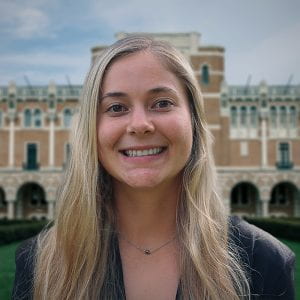
Sara Denison
Email
Doctoral Student
Civil and Environmental Engineering
B.S., 2020, Environmental Engineering, University of Texas at Austin
M.S., 2022, Environmental Engineering, Rice University
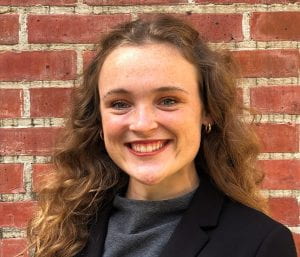
Sarah Glass
Email
Doctoral Student
Civil and Environmental Engineering
B.S., Chemical Engineering, Louisiana State University
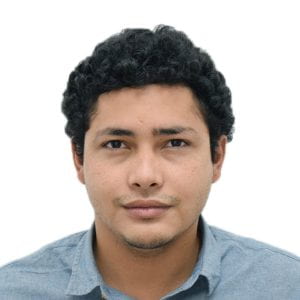
Publications
Alvarez started his academic career in 1993 at the University of Iowa, where he also served as Associate Director for the Center for Bioprocessing and Biocatalysis. During his tenure at Iowa, he pioneered research on the groundwater quality impacts associated with ethanol-blend releases. He discovered that the preferential degradation of ethanol and the accelerated depletion of nutrients and electron acceptors hinders hydrocarbon degradation and results in longer hydrocarbon plumes that pose a greater risk of exposure. He also characterized potential aesthetic impacts such as taste and odor produced by butyric acid and other byproducts of ethanol fermentation. His more recent finding that ethanol preferentialy migrates through the capillary fringe and undergoes phase separation (leaving behind a hydrocarbon non-aqueous phase) has important implications for site assessment and remediation of fuel ethanol releases. Alvarez’s research on the potential groundwater impacts of fuel ethanol earned him the Malcom Pirnie-AEESP Frontiers in Research Award in 2008, and provided guidelines for many states (e.g., California, Iowa and Maine) and the EPA on the remediation and natural attenuation of groundwater impacted by leaking underground storage tanks.
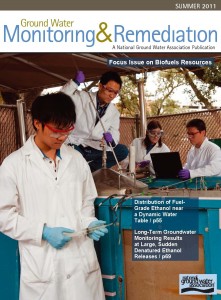 After moving to Rice University in 2003, Alvarez continued to contribute to the practice and pedagogy of hazardous waste remediation. He wrote two bioremediation textbooks (including the only one written in Spanish and one published by Wiley & Sons). In collaboration with Herb Ward and Joe Hughes in a pilot-scale study, Alvarez’s students demonstrated that chlorinated solvent DNAPLs commonly present in source zones can be effectively treated by bioaugmentation with dehalorespiring bacteria. This approach can significantly cut down remediation cost, and is being increasingly used by remediation companies at sites impacted by chlorinated solvents. This project received the WEF McKee Medal for Groundwater Restoration or Sustainable Use. Recently, Alvarez developed catabolic gene biomarkers to quantify the presence and expression of anaerobic degradation of monoaromatic hydrocarbons. This contribution has significant potential to support site-specific decisions to select or reject natural attenuation as a remedial approach, and to enhance the performance assessment and forensic analysis of bioremediation. For instance, it can help to reliably estimate biodegradation rates (and cleanup time) at a small fraction of the cost of traditional flux transects or mass balance approaches.
After moving to Rice University in 2003, Alvarez continued to contribute to the practice and pedagogy of hazardous waste remediation. He wrote two bioremediation textbooks (including the only one written in Spanish and one published by Wiley & Sons). In collaboration with Herb Ward and Joe Hughes in a pilot-scale study, Alvarez’s students demonstrated that chlorinated solvent DNAPLs commonly present in source zones can be effectively treated by bioaugmentation with dehalorespiring bacteria. This approach can significantly cut down remediation cost, and is being increasingly used by remediation companies at sites impacted by chlorinated solvents. This project received the WEF McKee Medal for Groundwater Restoration or Sustainable Use. Recently, Alvarez developed catabolic gene biomarkers to quantify the presence and expression of anaerobic degradation of monoaromatic hydrocarbons. This contribution has significant potential to support site-specific decisions to select or reject natural attenuation as a remedial approach, and to enhance the performance assessment and forensic analysis of bioremediation. For instance, it can help to reliably estimate biodegradation rates (and cleanup time) at a small fraction of the cost of traditional flux transects or mass balance approaches.
Alvarez has led various international collaborative field studies. With Henry Corseuil at the Universidade Federal de Santa Catarina, Brazil, they conducted a comprehensive long-term (10-year) study of an ethanol blend release, and showed that the transient accumulation of acetate (a common anaerobic metabolite) thermodynamically inhibitis anaerobic benzene biodegradation. Thus, some state agencies and the EPA are beginning to request acetate analysis as part of the regular site characterization process for ethanol blend releases. In collaboration with Nankai University, Alvarez directed a 100-mile survey of the Haihe River and showed that antibiotic resistance genes draining from animal farms are an emerging class of pollutants, and discerned environmental factors that contribute to their environmental amplification or attenuation.
Alvarez has applied his expertise in environmental microbiology to advance our understanding of the microbial response, adaptation, and impact due to nanomaterials exposure. This is an important subject because microorganisms are the basis of all known ecosystems, serving as primary agents of biogeochemical cycling and supporting food webs. Recent discoveries include that (a) buckminsterfullerene stable water suspensions (nC60) are strongly bactericidal and their mode of action involves oxidation of cell membrane proteins and interruption of energy transduction upon direct contact; (b) nC60 is also teratogenic and delays zebrafish embryo and larva development and causes pericardial edema, which can be mitigated by antioxidants (this was the first developmental toxicity study of any type of nanomaterial and showed the importance of mitigating oxidative stress); (c) C60 bioaccumulates in earthworms to a much lower extent than predicted by its hydrophobicity (which showed that traditional fugacity models do not apply to nanoparticles); (d) the antibacterial mechanism of silver nanoparticles is exclusively due to silver ion release, whose bioavailability and toxicity can be significantly mitigated by common ligands in water; and (e) quantum dots are easily weathered and release toxic metals that, at sublethal concentrations, can stimulate nitrogen cycling. These findings are important not only to understand and mitigate potential impacts to microbial ecosystem services, but also to develop greener disinfection, anti-fouling and anti-corrosion applications based on nanotechnology. Contributions to such applications include findings that (f) aminofullerene photocatalysts exhibit high efficiency for viral disinfection and detoxification of pharmaceuticals under solar irradiation (thus obviating the need for electricity), and (g) water filtration membranes that incorporate antimicrobial nanoparticles exhibit superior biofouling resistance.
Alvarez has also made several international contributions to water resources protection and associated policy. When he was a Ph.D. student, acting as an independent consultant, he helped formulate policies for the sustainable development of water resources in the Commonwealth of Dominica, and designed and implemented the groundwater monitoring plan for the City of Ann Arbor landfill. Later as a professor, he served as advisor to two Presidents of Nicaragua (Violeta Chamorro and Enrique Bolaños) on matters ranging from the remediation of Lake Nicaragua to hydroelectric power development. As a member of the board of directors of the Nicaraguan National Agency for Water Supply and Wastewater Treatment (ENACAL), he oversaw the design concept and bidding process for a $30-million wastewater treatment plant (the first one) in Managua. He also helped formulate groundwater remediation policy for the Mexican Petroleum Institute (IMP) as a scientific advisory board member. More recently, he increased public awareness about the large water footprint of fuel ethanol (e.g., driving one mile on ethanol is the equivalent of consuming 50 gallons of water – a drink or drive issue) with the help of the Leopold Leadership Foundation. Alvarez was also a Founding Member of the Nicaraguan Academy of Sciences in 2008, and promoted the adoption of sustainable water management as a core value.



